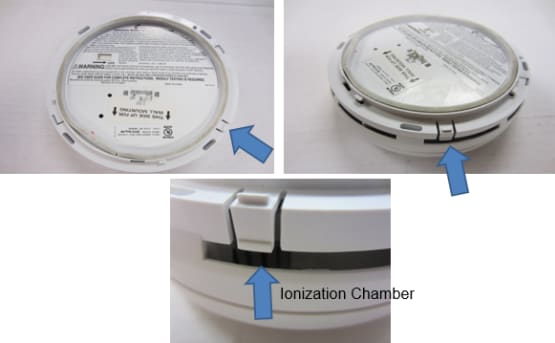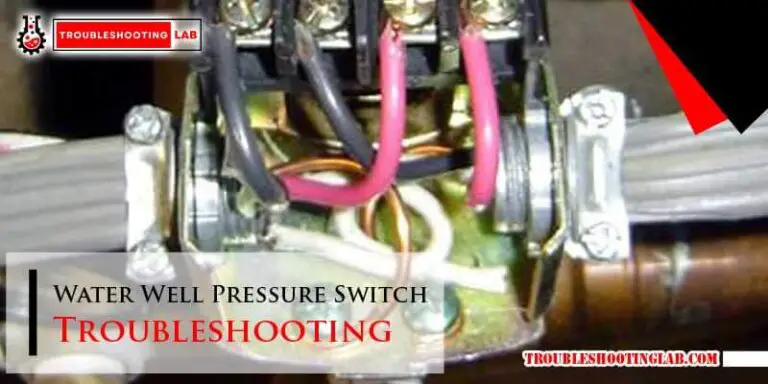Kidde Fire Alarm Troubleshooting: Quick Fixes & Tips
Kidde Fire Alarm Troubleshooting can be done by checking the batteries, ensuring the unit is clean, and verifying that it’s properly installed. Fire alarms are an essential safety feature in every home or building, and Kidde fire alarms are a reliable choice for protecting your property and loved ones.
However, like any other electronic device, it may malfunction or stop working altogether. If your Kidde fire alarm is beeping or not working correctly, troubleshooting it may help you determine the problem and fix it. We will discuss some common Kidde fire alarm troubleshooting tips that can help you identify and solve the issue.
By following these simple steps, you can ensure that your Kidde fire alarm is in good working condition and provides reliable protection in case of an emergency.
Common Kidde Fire Alarm Issues
Having a reliable fire alarm system is essential for the safety of your home and loved ones. However, like any other electronic device, Kidde fire alarms can sometimes encounter issues that may affect their performance. In this section, we will explore some common problems that you may encounter with your Kidde fire alarm and provide troubleshooting tips to resolve them.
False Alarms And Their Causes
False alarms can be frustrating and disruptive, but they are often triggered by specific causes that can be addressed. Here are some common reasons for false alarms in Kidde fire alarms:
- Presence of dust or debris: Accumulated dust or debris can interfere with the alarm’s sensors, causing false alarms. Regularly clean your fire alarm to prevent this issue.
- High humidity or steam: Excessive moisture in the air, such as steam from showers or humidifiers, can trigger false alarms. Consider relocating the alarm away from areas with high humidity.
- Interference from nearby devices: Other electronic devices, such as wireless routers or microwaves, can interfere with the fire alarm’s signal. Keep the alarm away from such devices.
- Expired or faulty sensors: Over time, the sensors in your fire alarm may become less sensitive or malfunction. Check the expiration date and replace any sensors that are no longer effective.
Battery And Power Malfunctions
Problems with batteries and power supply can significantly impact the functionality of your Kidde fire alarm. Here are some troubleshooting tips for battery and power-related issues:
- Low battery: If your fire alarm emits a chirping sound, it indicates a low battery. Replace the battery promptly to ensure the alarm functions correctly.
- Power outage: In the event of a power outage, your fire alarm may temporarily lose power. Ensure that your alarm has a backup battery to maintain functionality during such situations.
- Faulty wiring or connection: Check the wiring and connections of your fire alarm to ensure they are secure and not damaged. Faulty wiring can disrupt the power supply to the alarm.
Sensor Problems And Maintenance
The sensors in your Kidde fire alarm are responsible for detecting smoke or heat and triggering the alarm. Regular maintenance can help prevent sensor issues. Here are some tips:
- Clean the sensors: Use a soft brush or compressed air to remove any dust or debris that may have accumulated on the sensors. This helps to maintain their effectiveness.
- Test the sensors regularly: Follow the manufacturer’s instructions to test the sensors on a monthly basis. This ensures that they are functioning correctly.
- Replace expired sensors: Over time, the sensors in your fire alarm may expire. Check the expiration date and replace any sensors that are no longer valid.

Initial Troubleshooting Steps
When troubleshooting a Kidde fire alarm, start by checking the battery and ensuring it is properly installed. Test the alarm to verify if it is functioning correctly. If the issue persists, refer to the user manual for further guidance on resolving the problem.
Initial Troubleshooting Steps:
Before delving into Kidde fire alarm troubleshooting, it is important to take necessary safety precautions. You should wear protective gear such as gloves and goggles. Also, if you smell gas or smoke, evacuate the area immediately and contact the fire department.
Identifying Your Alarm Model:
The next step in Kidde fire alarm troubleshooting is to identify your alarm model. This information can usually be found on the back of the alarm or on the user manual. Knowing your alarm model is important because different models have different troubleshooting procedures.
Basic Reset Procedures:
If your Kidde fire alarm is malfunctioning or beeping intermittently, you can try resetting it. The basic reset procedure is to press and hold the reset button until the alarm stops beeping. If the problem persists, you can try replacing the batteries or cleaning the alarm sensors.
Here are some troubleshooting tips for common Kidde fire alarm issues:
– If your alarm is beeping continuously, it may be due to a low battery. Try replacing the batteries with fresh ones.
– If your alarm is beeping intermittently, it may be due to dust or debris on the sensor. Clean the sensor with a soft brush or vacuum cleaner.
– If your alarm is chirping, it may be due to a faulty sensor or wiring. Check the sensor and wiring for any damage and replace them if necessary.
– If your alarm is not beeping at all, it may be due to a dead battery or faulty wiring. Replace the batteries or wiring as needed.
In conclusion, Kidde fire alarm troubleshooting can be daunting but following these initial troubleshooting steps can help you identify and resolve common issues. Remember to take safety precautions and consult the user manual for your specific alarm model.
Quick Fixes For Your Kidde Alarm
Keeping your home and loved ones safe is a top priority, and having a functioning fire alarm is essential. However, there may be instances when your Kidde alarm encounters issues that require quick fixes. In this blog post, we will discuss three common troubleshooting steps that can help you resolve problems with your Kidde fire alarm:
Cleaning The Detector
If you notice that your Kidde alarm is not functioning properly, it could be due to dust or debris accumulation in the detector. Cleaning the detector is a simple yet effective fix. Follow these steps:
- Turn off the power to the alarm by removing the batteries.
- Use a soft brush or vacuum cleaner with a brush attachment to gently remove any dust or debris from the detector.
- Wipe the exterior of the alarm with a clean, damp cloth.
- Once the detector is clean, reinsert the batteries and test the alarm to ensure it is functioning correctly.
Replacing Batteries The Right Way
One of the most common reasons for a Kidde alarm to malfunction is depleted or improperly installed batteries. Follow these steps to replace the batteries correctly:
- Locate the battery compartment on your Kidde alarm. It is usually located on the back or side of the device.
- Remove the old batteries from the compartment. Remember to dispose of them properly.
- Insert new, high-quality batteries into the compartment, following the correct polarity (+ and -).
- Close the battery compartment securely.
- Test the alarm to ensure the new batteries are working correctly.
Addressing Chirping Noises
Is your Kidde alarm emitting a chirping noise? This could be an indication of low battery power or a malfunctioning device. Follow these steps to address the issue:
- Replace the batteries with fresh ones, ensuring they are properly installed.
- If the chirping persists, check for any obstructions or debris in the alarm. Clean the detector as mentioned earlier.
- If the problem persists after cleaning and battery replacement, contact Kidde customer support for further assistance.
By following these quick fixes, you can troubleshoot common issues with your Kidde fire alarm and ensure the safety of your home and family. Remember to test your alarm regularly and replace it according to the manufacturer’s recommendations. Stay safe!
When To Seek Professional Help
If you encounter persistent issues with your Kidde fire alarm system, it may be time to seek professional assistance. Here are some scenarios where professional help may be necessary:
Persistent False Alarms
If your Kidde fire alarm system is consistently triggering false alarms, it could indicate a serious underlying issue. Seek professional assistance to ensure the system is functioning correctly and to prevent unnecessary disruptions.
Continuous Beeping Issues
Continuous beeping from your Kidde fire alarm can be a sign of a malfunction. Professional help can diagnose and resolve the problem to restore the alarm’s proper functionality.
After A Fire Incident
Following a fire incident, it is crucial to have your Kidde fire alarm system thoroughly inspected by professionals. This ensures that any damage or malfunctions are addressed, restoring the system’s effectiveness in protecting your property and loved ones.
Preventive Measures And Maintenance Tips
When it comes to the safety of your home and loved ones, a properly functioning fire alarm is of utmost importance. To ensure that your Kidde fire alarm is always in top condition, it is essential to follow preventive measures and perform regular maintenance. By taking these steps, you can have peace of mind knowing that your fire alarm will promptly detect any signs of fire and provide an early warning, allowing you and your family to safely evacuate.
Regular Testing And Inspection
Regular testing and inspection are vital to ensure that your Kidde fire alarm is working as intended. It is recommended to perform a test on your fire alarm system at least once a month. Testing the alarm involves pressing the test button and listening for the loud alarm sound. If the alarm does not sound, check the batteries and replace them if necessary. Additionally, make sure that the alarm’s sensors are free from dust and debris, as this can affect its performance.
Alarm Replacement Schedule
Although Kidde fire alarms are designed to last for several years, it is important to replace them at the recommended intervals. The general guideline is to replace your fire alarm every 10 years. However, it is crucial to check the manufacturer’s instructions for specific recommendations. By replacing your fire alarm on schedule, you can ensure that it remains reliable and effective in detecting fires.
Educating Your Household
Ensuring that everyone in your household understands the importance of fire safety and knows how to respond in case of an emergency is crucial. Take the time to educate your family members, especially children, about fire safety practices. Teach them how to recognize the sound of the fire alarm and what actions to take when they hear it, such as evacuating the house immediately and contacting emergency services. Regularly conduct fire drills to practice the evacuation process and reinforce the importance of fire safety.
By following these preventive measures and maintenance tips, you can optimize the performance of your Kidde fire alarm and enhance the safety of your home and loved ones. Remember to regularly test and inspect your fire alarm, replace it according to the recommended schedule, and educate your household about fire safety practices. Taking these proactive steps will help ensure that your fire alarm is always ready to provide the earliest possible warning in the event of a fire.
Frequently Asked Questions
What Are The Common Reasons For A Kidde Fire Alarm Beeping?
A Kidde fire alarm may beep due to low battery, dust accumulation, or a malfunctioning sensor. Ensure the battery is functional and clean the alarm regularly to prevent false alerts.
How Often Should I Test My Kidde Fire Alarm?
It’s recommended to test your Kidde fire alarm at least once a month. Regular testing ensures that the alarm is functioning properly and provides early detection of potential fire hazards.
What Should I Do If My Kidde Fire Alarm Keeps Going Off For No Reason?
If your Kidde fire alarm keeps sounding without a valid cause, check for dust and debris. If the issue persists, contact Kidde customer support for further troubleshooting and assistance.
How Do I Reset My Kidde Fire Alarm After It Goes Off?
To reset a Kidde fire alarm after it goes off, press the reset button on the device. If the alarm continues to sound, check for any potential fire hazards and ensure the area is well-ventilated.
Conclusion
Troubleshooting Kidde fire alarms is essential for safety. Regular testing and maintenance can prevent emergencies. Understanding the common issues and solutions ensures your alarm functions optimally. Stay informed and proactive to protect your home and loved ones. Prioritize fire safety with effective alarm troubleshooting.





All they tell you is you need to clean the units, dust from ceiling fans causes issues with the sensors. I have been dealing with false reading for over 2 years, I have called my gas and electric company they haven’t found any problems with my boilers, hot water heater or fire place. So I’m pulling the 6 units I purchased and buying new from another company.
Thank you for sharing your experience with us. It can be really frustrating dealing with persistent issues like false readings from your Kidde Fire Alarm units. While cleaning is often suggested as a first step, I understand it might not solve the problem entirely in your case, especially if you’ve already ruled out issues with your boilers, hot water heater, or fireplace.
Since you’ve already been in touch with your gas and electric company, it might be worth double-checking the placement of the units. Sometimes environmental factors such as humidity, extreme temperatures, or proximity to cooking appliances can trigger false alarms. Also, if the units are older or have been exposed to dust for an extended period, it could affect the sensor’s performance over time.
If you’d like, here are a few steps you can try before replacing the units:
If these steps don’t help, replacing the units may indeed be the best solution. I hope this helps, and please don’t hesitate to reach out if you have any other questions!
Best regards,
TroubleshootingLAB